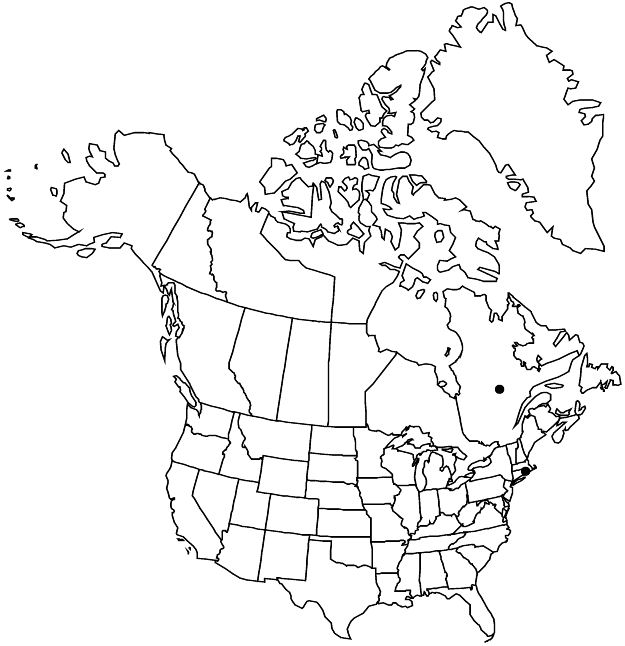Potentilla thuringiaca
Enum. Hort. Berol. Alt. 2: 64. 1822.
Glands sparse, uncolored, minute. Stems 1.5–5(–7) dm. Basal leaves 4–25(–35) cm; petiole 2–20(–25) cm, hairs sparse to common, ± spreading, 1–2.5 mm, weak, glands absent or sparse; leaflets 5–7(–9), central one narrowly to broadly oblanceolate, 1–6(–9) × 0.5–2 cm, distal 2/3–3/4+ of margin incised 1/4–1/3(–1/2) to midvein, teeth (4–)6–10(–13) per side, surfaces ± similar, abaxial green to pale green, hairs sparse to common on primary veins, ascending to spreading, 0.5–1.5 mm, weak, adaxial green, hairs more appressed and shorter. Cauline leaves 1–3; stipules fused with less than 1/3 of petiole, free portion longer than fused portion. Inflorescences 5–20-flowered. Pedicels 1–3 cm (proximalmost to 5 cm). Flowers: epicalyx bractlets linear to lanceolate, 3–8 × 1–1.5(–2) mm; hypanthium 3–5 mm diam.; sepals 3–5 mm, apex ± acute; petals (5–)8–10 × 4–10 mm; filaments 0.3–1.5 mm, anthers 0.7–0.9 mm; carpels 35–50, styles 1.1–1.3 mm. Achenes 1–1.2 mm, faintly rugose. 2n = 42, 56 (Eurasia).
Phenology: Flowering late spring–summer.
Habitat: Edges of and openings in hardwood and conifer woodlands
Elevation: 0–100 m
Distribution

Introduced; Que., R.I., Eurasia.
Discussion
Potentilla thuringiaca might be mistaken for the more widely established P. intermedia of sect. Terminales. In addition to having flowering stems lateral to persistent basal leaves, P. thuringiaca has much larger petals (mostly 8–10 mm versus 4–5 mm), 5–9 leaflets, and tubercles at the bases of the long, spreading hairs.
To the Quebec records (and subsequent collections) reported by R. Cayouette (1966) is added Block Island, Rhode Island (Fernald et al. 9650, GH).
Selected References
None.